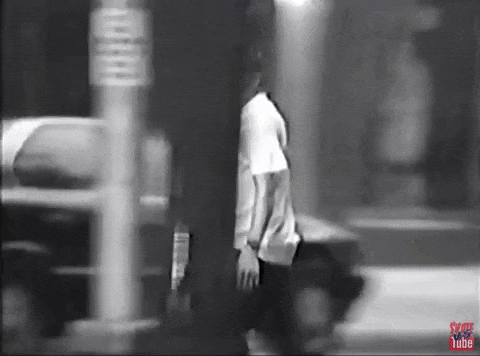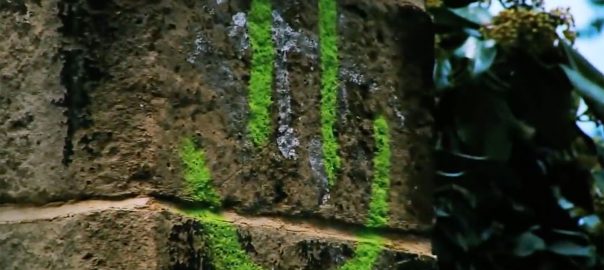The picture opens on faded graffiti on a rough, dilapidated wall.
The tight shot sketchily pans upward as a board appears to be handed from below to someone on the wall. It’s Ben Kadow in a beige Supreme sweater with sunglasses around his neck. The focus accidentally pulls to the leaves on the tree behind Ben as he looks forward. The image is never stationary.
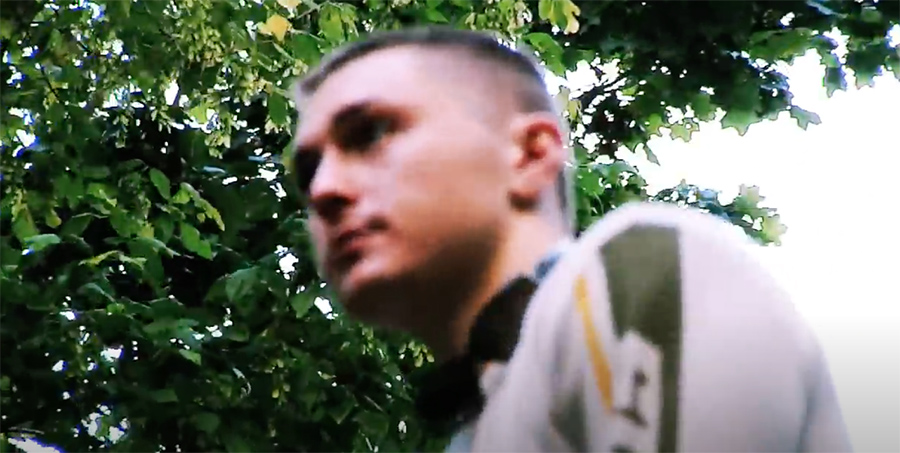
An out-of-focus Kevin Rodriguez appears on Ben’s right, holding Ben’s shoulder for balance. We still aren’t sure exactly where we are. What is this obstacle? Is this going to be a trick from Ben or Kevin, or someone else entirely? Perhaps this is some sequence of them chilling at a spot while someone else is skating? So far, we know there are two skaters standing on or against some kind of old wall and there seems to be a breeze in the foliage behind them. The information is slow to come and of indeterminate importance.
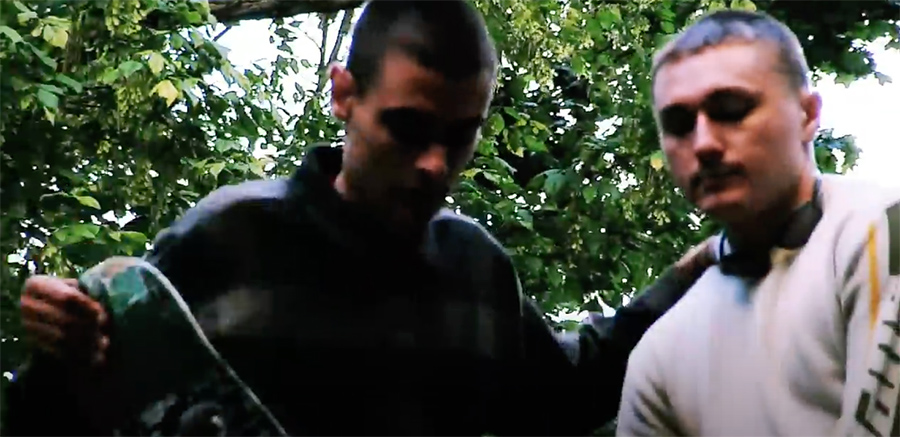
The shot zooms out to reveal Ben and Kevin are balancing on some type of old pillar, the ornamental top of which Ben is holding onto. Is he supporting it or is it supporting him? Kevin, using Ben for balance, sets the board’s tail on some mantle on this structure and positions himself for a drop in. We’re still not sure how high up we are or what K-Rod is dropping into, but before we can really get any bearings, it is already happening.
Kevin drops in. The camera starts to pull out and pan down while the pacing switches to that chunked duplicated-frame type of slow-motion. The pan and zoom reveals Kevin is dropping in off this pillar into a banked iron rail of a support structure. Even in slow-mo we only see the entire obstacle for a fraction of a second, and even then Ben’s head is out of frame before we see the ground.
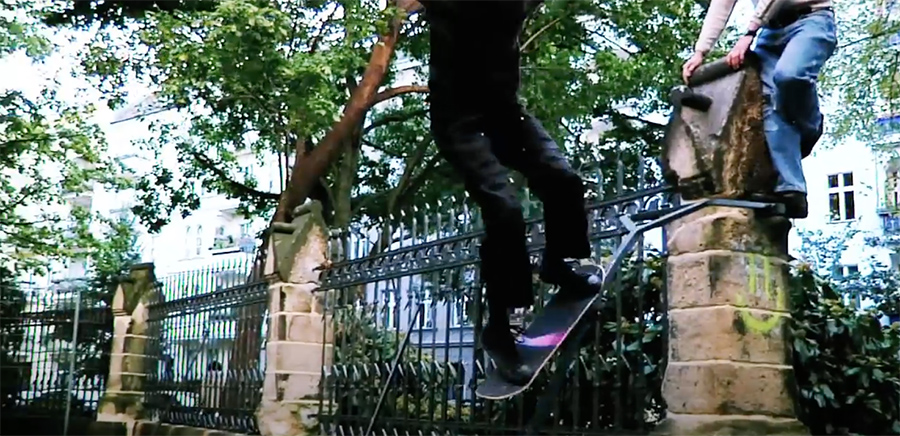
As Kevin gets four wheels on the ground the shot is already zooming in tight towards his feet. By the time he starts a frontside power slide, about 14 inches from the spot he landed, his torso it already out of frame. The ground is maybe stickier than he anticipated as his momentum carries him over his nose and he steps off. But we don’t see his feet hit the ground. The shot, which is still zooming tighter, has now started to tilt upward towards his face. His expression and body language is of frustration. He is out of focus a bit as he looks off camera to his right and covers his eyes with the back of balled fists. The camera continues its zoomed scanning past Kevin. The trees and sky become a blur of motion as the clip ends.
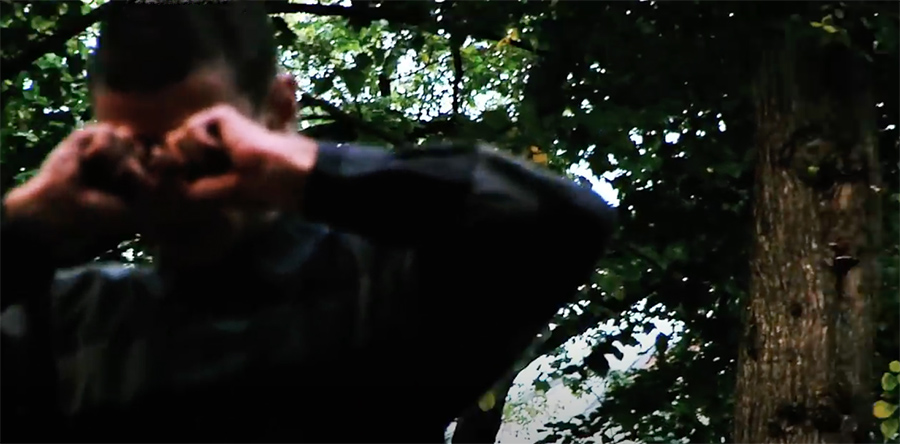
This one shot, a shot of a sort-of make of a gnarly gnarly drop-in (although it is hard to know exactly how gnarly since we really didn’t get to see who who obstacle for more than a moment), lasts 43 seconds (and I forgive you if you skipped my 5 paragraph description of it). It is just a possible throw-away trick from a tour edit, yet because of the extreme amateur ‘Strobeck’ filming, it contains more mystery, tension, suspense, and drama than would be inherit in the action alone. The clip moves slow and the action moves fast. It denies us so much information, yet is richer for it.
Under the normal expectations of skate video viewing circumstances, this clip is infuriating.
And, more or less, the whole of Supreme’s Mind Goblin Berlin tour video is made from clips like these.
For someone who has invested so much time and mental energy on skate videos, I’ve surprisingly not given much thought as to where I stand on Bill Strobeck‘s signature filming and editing style. Or, more accurately, where I stand on the popularization of Bill Strobeck’s style. The long lens pan and zoom thing.
Well, The above statement isn’t entirely true.
I do find my self occasionally making exasperated noises as I watch yet another independent video, or even big brand video, where great skating is partially obscured by a misplaced emphasis on zooming in tight on a skater’s feet or face.
Sometimes I want to see the entire stair set while the trick is happening. Sometimes less isn’t more; It’s less. Sometimes it just looks like shitty filming and I feel like the skater being filmed got robbed of a great clip. Sometimes I feel like I got robbed of watching a great clip.
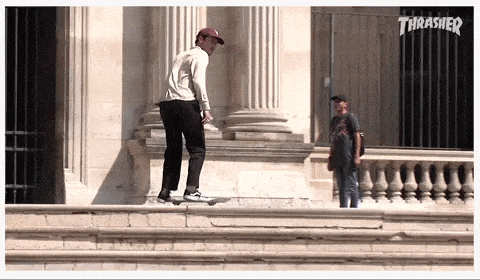
This hectic zooming movement is no longer a rebellious alternative to high end steadycam shots. It isn’t even a Fat Bill thing anymore. Not even close. This aesthetic has become prevailing.
Now, I don’t blame Strobeck for this. He did his thing and pushed some boundaries and it worked. So he pushed things a bit further and, with the help of some very talented youngsters under his wing, made one of the most popular videos of the decade with 2014 Supreme’s cherry. And of course others emulated. And here we are where fisheye clips are the exception and you can see what a skaters feet are doing or what their hands are doing, but probably not both.
All this is context serves as a background for the surprising revelation that despite not having much in the way of expectations or enthusiasm for Bill Strobeck’s new Supreme cut, Mind Goblin, I fucking loved it.
Yes, it’s a 5 minute tour video stretched into 20 minutes where Fat Bill out-Fat Bills himself and literally twists the camera 45 and then 90 degrees and even upside down like some middle schooler filming his friends for the first time. Yes, he gives his own name precedence over the film’s title and skaters names and nearly misses some incredible Tyshawn tricks. Yes, the collateral citizens in the shots are filmed a little too long and too closely and it feels creepy. All these things make for a video I shouldn’t feel compelled to finally write another blog piece for, but it all just worked. Perhaps not in spite of these things, but because of these things.
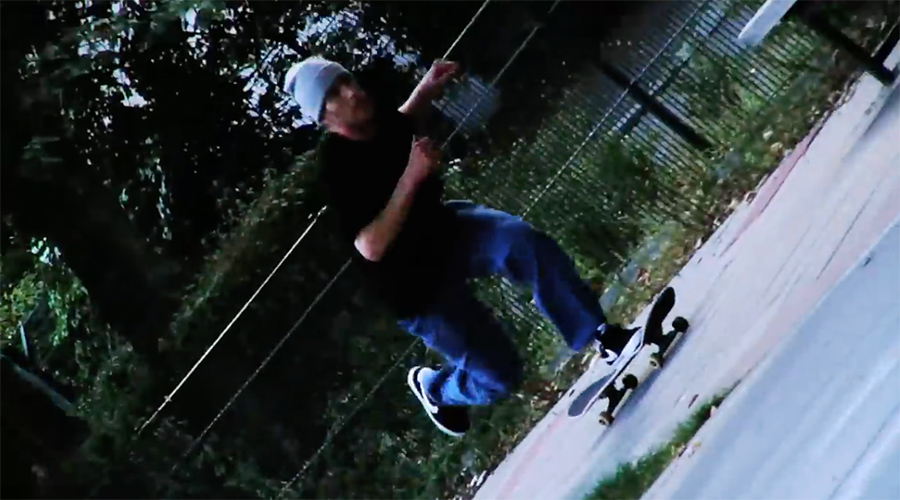
Whatever it was, I was engrossed and felt like I finally got it.
The focus pulls, the chopped slow motion, the shifting from one subject to the next, the awkward angles, the saturated images, the tight shots… it creates an atmosphere and it creates tension. I’m never quite sure where we are and what the obstacle might be. Even recognizable spots like the Berlin’s Polish Veteran’s Memorial look different and newly menacing when filmed from awkward, impractical angles. A foreign country is made more foreign.
The team is exceptional- that’s also a big part of this. The talented youths of 2014 are all grown and professional and supplemented by another crop of prodigy babyfaces. We know each trick coming has the potential to be amazing but also might not be a trick at all since a lot of mundane things are getting attention, and there is a wonderful thrill in anticipation.
Who is going to be skating next? The out of focus person in the background? Will Bill fail to capture the next trick satisfactorily? Is there significance to the random object zoomed into? Is this the same spot as before? What is happening in the shadows over there?
And, of course, we are eventually rewarded with great tricks. Even if not always clear and crisp and steady and filmed from comfortable places, the bangers are there. Everyone is rifling off stair set combos. Casper is falling on his face. Kader hucks a few. Tyshawn is flipping up the stairs. Nik Stain is literally shooting sparks from his backside smiths.
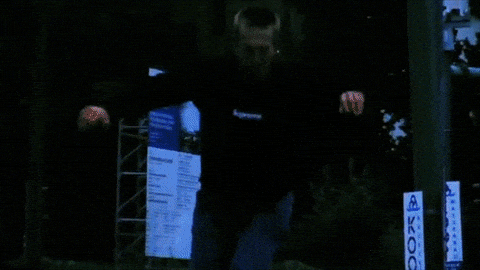
So maybe, in the right hands and with the right mindset, going full Strobeck can work. Maybe it can even elevate. But we’ll never miss it if it doesn’t go away so for the love of god cut it out, everyone, and put a death lens on it.
BONUS BILL:
Let’s take a look back at what might be Bill Strobeck birthing the current zoom-and-pan environment we are existing in: His $TUD section from the 2012 Transworld Cinematographer’s Project video (which, when you remove Gonz roller skating and the street weirdo Elvis hamming it up, only contains about 90 seconds of skating).
BONUS BONUS BILL:
The earliest clear instance of this long-lens-zooming film style would be Dan Wolfe’s Eastern Exposure 3 in 1996. There are clips here and there like this throughout the video, but it really stands out in this Donny Barley line:
